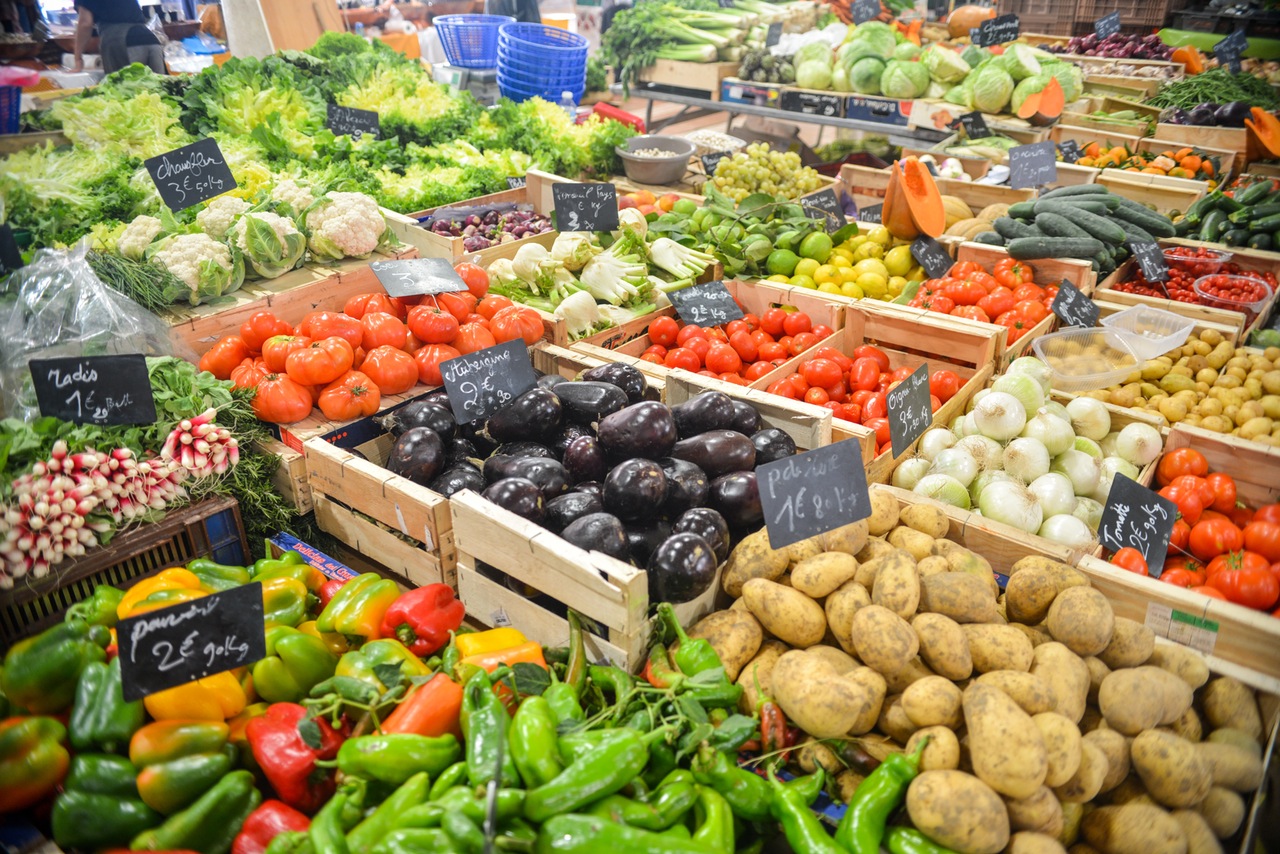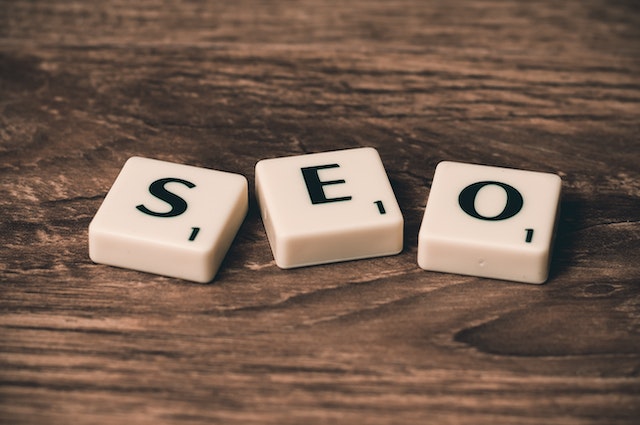Introduction:
Unlocking the mysteries of search engines can be a daunting task, but understanding the inner workings of Googlebot is essential for anyone wanting to enhance their online presence. In this article, we will delve into the world of Googlebot, revealing its role as a search crawler and shedding light on its crucial functions like indexing and content analysis. Explore the fascinating world of Googlebot and discover how it plays a vital role in enabling websites to be discovered by search engine users.
I. What is Googlebot?
Top of Page
Googlebot is the web crawling bot (also known as a spider) used by Google to discover and update content on the web for its search engine. Here's a breakdown of how Googlebot operates:
1. Crawling: - Discovering URLs: Googlebot discovers new and updated URLs by following links from known pages to new pages. It also utilizes sitemaps provided by website owners and other known directories or lists of URLs. - DNS Queries: Before visiting a page, Googlebot performs a DNS query to get the IP address of the server hosting the page. - Fetching Pages: Googlebot sends HTTP requests to web servers to fetch the pages it intends to crawl.
2. Processing: - Reading Robots.txt: Before crawling a page, Googlebot checks the site’s robots.txt file to ensure it’s allowed to crawl the page. - Parsing Content: Googlebot parses the content of the pages to understand the structure, links, and other elements. - Extracting Links: It extracts links from the page to find new URLs to crawl in the future.
3. Indexing: - Content Analysis: Googlebot analyzes the content to determine its topic, quality, and relevance. - Metadata Extraction: It extracts metadata like the title, meta description, headers, etc. - Sending Data to Indexer: The data collected by Googlebot is sent to Google’s indexing system to be stored and organized in the search index.
4. Scheduling: - Recrawling: Googlebot schedules future crawls to check for updates on pages. The frequency of recrawling can depend on many factors including the page’s relevance and how often it’s updated. - Crawl Budget Optimization: Googlebot operates within a "crawl budget" to optimize its crawling activity, balancing between frequency of visits and the load on web servers.
5. Respectful Crawling: - Rate Limiting: Googlebot adjusts its crawl rate to ensure it doesn’t overwhelm web servers. - Adhering to Standards: It adheres to web standards and protocols to ensure respectful and efficient crawling.
6. User-Agent String: - Identification: Googlebot identifies itself using a user-agent string when making requests to web servers, allowing website administrators to differentiate its requests from those of other bots or users.
7. Error Handling: - Handling Errors: If Googlebot encounters errors such as 404 Not Found or server errors, it may retry fetching the page later or adjust its crawl schedule accordingly.
Googlebot plays a crucial role in Google's search ecosystem by continuously discovering, crawling, and indexing new and updated content, ensuring that the search index remains fresh and reflective of the current state of the web.

The Basics of Googlebot: What is the Definition and Function of a Search Crawler?
A search crawler, also known as a web crawler, spider, or bot, is an automated program used by search engines to systematically browse the World Wide Web to collect information about web pages and their content. The primary functions and activities of a search crawler include:
1. Passing Data for Indexing: - Crawlers collect data from web pages which is then indexed by the search engine. This data might include text content, meta tags, links, images, and more.
2. Discovering New Content: - Crawlers discover new content by following links from known pages to new pages. They are essential for discovering new or updated pages and content.
3. Updating Existing Indexes: - Crawlers periodically revisit indexed pages to check for updates and changes, ensuring the search engine's index remains accurate and current.
4. Following Links: - By following links on web pages, crawlers can understand the structure of the web and the relationships between pages.
5. Ranking: - While crawlers themselves don't rank pages, the data they collect is crucial for search engine algorithms to rank pages in search results.
6. Obeying Robots.txt and Meta Robots Tags: - Crawlers adhere to standards like respecting the robots.txt file and meta robots tags on websites, which indicate which pages should or should not be crawled.
7. Collecting Link Data: - Crawlers collect data about the links on a page, including internal links and backlinks from other sites, which can be used in the ranking process.
8. Content Analysis: - Crawlers analyze the content of pages, including text, images, videos, and more, to understand what topics and keywords are relevant to each page.
9. Site Structure Analysis: - Understanding the structure of websites, including their sitemaps and architecture, is another function of crawlers.
10. Monitoring Site Performance: - Some crawlers are designed to monitor site performance, loading speed, mobile-friendliness, and other technical aspects.
11. Checking for Errors: - Crawlers can identify errors such as broken links, 404 errors, or server errors which might affect a site’s ranking or usability.
12. Identifying Spam or Malicious Content: - Some crawlers are equipped to identify spammy or malicious content to ensure such pages don't negatively impact the search experience.
13. Fetching Resources: - Crawlers fetch necessary resources like CSS, JavaScript, and images required to render web pages, especially important in the era of JavaScript-driven websites.
The data gathered by search crawlers is crucial for the operation of search engines, and plays a significant role in how web pages are indexed and ranked, ultimately determining how they are displayed in search engine results pages (SERPs).

Introduction to Googlebot: How is Google's Web Crawler Different from Other Spiders?
Googlebot is the web crawler used by Google, and while its core function—to crawl and index web content—is similar to other spiders, there are several factors and features that set it apart:
1. Sophistication: - Googlebot is known for its sophisticated algorithms which allow it to efficiently crawl the web, interpret content, and understand website structures. It's capable of rendering JavaScript, which is crucial for crawling modern websites.
2. Resources: - Being backed by Google, one of the largest tech companies in the world, Googlebot has substantial computational resources at its disposal. This allows it to crawl the web extensively and frequently.
3. Adherence to Protocols: - Googlebot strictly adheres to robots.txt, robots meta tags, and other directives, respecting webmasters' wishes on what can and cannot be crawled.
4. Mobile-first Indexing: - Googlebot operates with a mobile-first indexing approach, prioritizing the mobile version of websites in its indexing and ranking process. This reflects the growing dominance of mobile web browsing.
5. Rate of Crawling: - Googlebot is designed to be efficient and respectful of server resources. It adjusts its crawling rate based on the server's response time to ensure it doesn’t overload servers.
6. Evergreen Googlebot: - Google has updated Googlebot to an evergreen rendering engine. This means Googlebot uses the latest version of Chromium, ensuring it can render modern web pages just like the latest versions of Chrome.
7. Rich Features Identification: - Googlebot is adept at identifying rich features like structured data, which can be used to enhance the appearance of pages in search results (e.g., rich snippets, rich cards, etc.).
8. Integration with Google Services: - Googlebot is tightly integrated with other Google services like Google Search Console, providing webmasters with detailed reports and insights on how their sites are being crawled and indexed.
9. Developer Tools and Documentation: - Google provides extensive documentation, tools, and resources to help developers and webmasters understand how Googlebot interacts with their sites and how to optimize for better crawling and indexing.
10. Security Measures: - Googlebot has strong measures in place to identify and avoid crawling malicious content, ensuring the safety and quality of the search results.
11. Internationalization and Localization: - Googlebot is capable of crawling and indexing content in multiple languages and regional versions, facilitating international SEO strategies.
12. Continuous Updates and Improvements: - Google continuously updates and improves Googlebot to adapt to the evolving web and to provide better search results.
These factors contribute to Googlebot's effectiveness and efficiency in indexing the web, which in turn, plays a significant role in maintaining Google's position as a leading search engine.

The Purpose of Googlebot: Feeding Google Indexer
Googlebot serves as the backbone of Google's search engine operations by performing several crucial tasks aimed at organizing and making the vast amount of information on the web accessible and useful. Here are the primary purposes of Googlebot:
1. Crawling: - Googlebot discovers and crawls new and updated pages on the web. It follows links from one page to another, thereby uncovering new content which is then queued for indexing.
2. Indexing: - Once the pages are crawled, Googlebot helps in indexing the content. Indexing involves processing the information collected by Googlebot and preparing it for inclusion in Google's search index. This includes understanding and storing the text, images, and other media on a page.
3. Rendering: - Googlebot is capable of rendering web pages much like a browser. This is particularly important for modern websites that use JavaScript to load and display content. Rendering ensures that Google understands and indexes the content accurately.
4. Updating the Index: - Googlebot revisits pages periodically to check for updates or changes. If a page has been updated since the last crawl, Googlebot will update the information in Google’s index to reflect the current content.
5. Obeying Webmaster Directives: - Googlebot adheres to instructions provided by webmasters in the robots.txt file and meta robots tags, which specify which pages should or should not be crawled and indexed.
6. Discovering Site Structure: - By crawling a website’s structure, including following internal links and understanding the site’s sitemap, Googlebot gains insights into how the website is organized, which helps Google understand the site's hierarchy and categorization of content.
7. Quality Assessment: - Although Googlebot itself doesn’t evaluate the quality of content, the data it collects is used by Google's algorithms to assess the quality, relevance, and usefulness of pages.
8. Collecting Link Data: - Googlebot collects data about the links on a page, including which sites link to that page and which pages that page links to. This link graph is used by algorithms like PageRank to determine the authority and importance of pages.
9. Mobile-First Indexing: - Googlebot supports mobile-first indexing, meaning it primarily crawls and indexes the mobile version of a website to ensure a good user experience for mobile users, reflecting the increasing dominance of mobile internet usage.
10. Identifying Technical Issues: - Through its crawling activity, Googlebot can help identify technical issues like broken links, server errors, or pages that take too long to load.
11. Supporting SEO: - By adhering to the standards and guidelines provided by Google, webmasters can optimize their websites for better crawling and indexing by Googlebot, which in turn improves their site’s performance in search rankings.
Googlebot's activities are fundamental for Google to provide accurate, up-to-date, and relevant search results, thus offering a high-quality search experience to users around the globe.

How Googlebot Works
Googlebot operates through a process that encompasses several steps, enabling it to discover, crawl, render, and index content on the web. Here’s a breakdown of how Googlebot works:
1. Discovery: - Seed URLs: Googlebot starts with a list of known URLs, called seed URLs, from previous crawls and sitemaps provided by webmasters. - Link Following: It follows links on these pages to discover new URLs. By following links from page to page, Googlebot can discover a significant portion of the web.
2. URL Queue: - Discovered URLs are placed in a queue for crawling. This queue is prioritized based on various factors such as the URL's popularity, how frequently the content changes, and the website's crawl budget.
3. Robots.txt Check: - Before crawling a page, Googlebot checks the site’s robots.txt file to ensure it has permission to crawl the page. The robots.txt file provides instructions on which pages bots are allowed or disallowed from accessing.
4. Crawling: - Googlebot fetches the page content by making an HTTP request to the server. It retrieves the HTML code, metadata, and other resources like CSS, JavaScript, and images necessary for rendering the page.
5. Rendering: - Googlebot is capable of rendering pages, meaning it can execute JavaScript and see the page as users do. This is essential for indexing modern, JavaScript-heavy websites accurately.
6. Content Analysis: - Once the page is fetched and rendered, Googlebot analyzes the content to understand its structure, text, images, videos, and other elements. It also extracts metadata and structured data.
7. Link Extraction: - During the analysis, Googlebot extracts links (both internal and external) present on the page for further crawling, thus continuing the discovery process.
8. Indexing: - The analyzed content is then sent to Google's indexer to be processed and stored in Google's index, making it searchable by users.
9. Ranking: - While Googlebot itself doesn't rank pages, the data it collects is used by Google's ranking algorithms to determine the relevance and authority of pages for specific search queries.
10. Updating: - Googlebot periodically revisits pages to check for updates or changes, ensuring the index remains current.
11. Handling Directives: - Throughout this process, Googlebot respects directives provided by webmasters through the robots.txt file, meta robots tags, and other mechanisms that control how pages are crawled and indexed.
12. Reporting: - Information about Googlebot's crawling activity can be accessed by webmasters through Google Search Console, where they can see crawl errors, submit sitemaps, and more.
Through this structured yet dynamic process, Googlebot plays a critical role in ensuring that Google's search index is comprehensive, up-to-date, and reflective of the most relevant and high-quality content on the web.

Crawling the Web: What is Googlebot's Journey?
Googlebot's journey of crawling the web is a systematic yet complex endeavor that involves various steps and components to ensure accurate and timely indexing of web content. Here's an overview of Googlebot's journey as it crawls the web:
1. Seed List: - Starting Point: Googlebot begins its journey with a seed list of URLs from previous crawls and sitemaps submitted by webmasters through Google Search Console. - Queue Preparation: URLs from the seed list, along with new URLs discovered from other sources, are queued for crawling based on certain priorities.
2. Pre-Crawl Checks: - Robots.txt: Before accessing a page, Googlebot checks the robots.txt file of the website to ensure it has permission to crawl the specified page. - Crawl Budget Management: Googlebot also takes into account the site's crawl budget to ensure it doesn't overwhelm the server.
3. Page Retrieval: - HTTP Request: Googlebot makes an HTTP request to the server hosting the webpage to fetch the page content. - Content Acquisition: It retrieves the HTML, CSS, JavaScript, images, and other resources necessary to fully render the page.
4. Rendering: - JavaScript Execution: Modern websites often rely on JavaScript to display content. Googlebot renders pages to ensure JavaScript-driven content is accessible. - Page Layout: It processes the page layout to understand how the content is structured and displayed.
5. Content Analysis: - Text Parsing: Googlebot parses the text content to identify keywords, topics, and other relevant information. - Metadata Extraction: It extracts metadata and structured data to understand the context and categorization of the content.
6. Link Extraction: - Internal and External Links: Googlebot identifies and extracts links within the page to both internal and external destinations. - Queueing New URLs: New URLs discovered through link extraction are queued for future crawling.
7. Indexing: - Data Transmission: The collected data is transmitted to Google's indexing system. - Index Update: The index is updated with the new information, making the content searchable.
8. Ranking Considerations: - While not a part of Googlebot's direct function, the data collected aids Google's algorithms in ranking pages based on relevance, authority, and other factors.
9. Continuous Crawling: - Revisiting: Googlebot revisits pages periodically to check for updates, ensuring the index remains current. - Discovery: The continuous discovery of new content through links, sitemaps, and other means keeps Googlebot's journey ongoing.
10. Feedback Loop: - Webmaster Tools: Through Google Search Console, webmasters can monitor Googlebot's activity on their site, submit new content, and address any crawl errors. - Algorithm Improvements: Feedback from webmasters and ongoing analysis contribute to improvements in the crawling process and Google's search algorithms.
11. Adaptation: - Algorithm Evolution: Over time, Googlebot adapts to changes in web technologies and search algorithms to ensure accurate and comprehensive crawling.
This journey reflects a continuous, cyclical process through which Googlebot strives to keep Google's search index as up-to-date and relevant as possible, catering to the evolving landscape of the web and the informational needs of users.

Understanding the Web Crawler's Structure
Certainly! The Google web crawler, known as Googlebot, has a structured approach to navigating, understanding, and indexing the vast amount of information available on the web. Here's a simplified breakdown of Googlebot's structure and the components involved in its operation:
1. Discovery Component: - Seed URLs: It starts with a list of known URLs from previous crawls and sitemaps submitted by webmasters. - Link Following: Googlebot follows links on pages to discover new URLs, continuously expanding its list of pages to crawl.
2. Scheduler: - URL Queue: URLs to be crawled are organized in a queue, prioritized based on various factors like page importance, crawl budget, and freshness. - Crawl Rate Limiting: The scheduler manages the rate at which pages are crawled to ensure servers aren't overwhelmed and the crawl budget is respected.
3. Pre-Crawl Checks: - Robots.txt Check: Before crawling a page, Googlebot checks the robots.txt file to ensure it's allowed to access the page. - Robots Meta Tag Check: It also checks for meta robots tags that might restrict crawling or indexing.
4. Crawler: - HTTP Requests: Googlebot sends HTTP requests to servers to retrieve page content. - Resource Fetching: It fetches not just the HTML, but also CSS, JavaScript, and other resources necessary to fully render the page.
5. Renderer: - Rendering Engine: Googlebot uses a rendering engine to process JavaScript and render pages much like a modern browser would. - Page Snapshot: It captures a snapshot of the rendered page for further analysis.
6. Content Parser: - Text Extraction: Parses text and other content from the HTML, CSS, and JavaScript. - Structured Data Extraction: Extracts structured data, metadata, and other semantic information from the page.
7. Link Extractor: - Internal and External Link Extraction: Identifies and extracts links from the page to discover new URLs and understand the page's connectivity within the web.
8. Indexer Interface: - Content Submission: The parsed content, along with meta information, is submitted to the indexing component. - Indexing Requests: Sends indexing requests to update Google's search index with the new or updated information.
9. Indexer: - Index Updating: Updates Google's search index with the information provided by the crawler. - Document ID Assignment: Assigns unique identifiers to new pages and updates existing entries with new information.
10. Logging and Monitoring: - Error Logging: Logs errors encountered during crawling for analysis and troubleshooting. - Performance Metrics: Collects and analyzes performance metrics to optimize the crawling process.
11. Feedback Loop: - Webmaster Interaction: Provides feedback to webmasters through Google Search Console regarding crawling issues, indexing status, and other relevant information. - Algorithm Feedback: Collects data that can be used to refine and improve Google's crawling and indexing algorithms.
This structured approach allows Googlebot to efficiently and effectively crawl the web, ensuring that Google's search index remains comprehensive, up-to-date, and capable of providing relevant search results to users around the globe.

User Agents: Googlebot Variations and Types
Google employs a variety of crawler agents, each tailored for specific purposes to ensure comprehensive and accurate indexing of web content. Here are the primary variations and different types of Googlebot:
1. Googlebot Desktop: - This is the traditional version of Googlebot designed to crawl, render, and index pages from a desktop browser's perspective.
2. Googlebot Mobile: - As mobile search queries have surpassed desktop queries, Google introduced Googlebot Mobile to crawl, render, and index pages from a mobile browser's perspective. It adheres to Google's mobile-first indexing approach.
3. Googlebot Images: - Specifically tailored to discover and index image content on the web, helping to populate Google Images search results.
4. Googlebot Video: - This crawler is designed to index video content, assisting in populating Google Video search results.
5. Googlebot News: - A specialized crawler for indexing news articles and content to be displayed in Google News.
6. Googlebot Ads: - This bot crawls web pages to better serve and understand the context for Google Ads.
7. Mediapartners-Google: - Associated with Google Adsense, this bot crawls content to determine the relevance and context for displaying advertisements.
8. AdsBot-Google: - This bot reviews the quality of landing pages to help determine AdWords Quality Score.
9. Googlebot Smartphone: - A more modern version of the mobile crawler, optimized for smartphone-optimized websites.
10. Googlebot AMP: - This version is tailored to crawl and index AMP (Accelerated Mobile Pages) to ensure they adhere to the AMP standard and are served properly in search results.
11. Rich Snippets Googlebot: - Crawls structured data markup within pages to enable rich snippets (enhanced search result listings) in Google Search.
12. Googlebot Discover: - A crawler for content that might appear in the Discover feature on mobile devices, which recommends content to users in the Google app based on their interests.
Each of these Googlebot variations has a unique user-agent string that can be identified in server log files, allowing webmasters to see how different types of Googlebot interact with their site. These variations help Google to cater to the diverse types of content and different devices used to access the web, ensuring a comprehensive and user-friendly search experience across its various platforms and services.

II. Googlebot: An Analytical Approach
Top of Page
The Crawl Process: How Googlebot Discovers Links
Googlebot discovers links to crawl through a combination of methods that allow it to systematically explore the vast expanse of the web. Here’s how Googlebot discovers links:
1. Seed URLs: - Googlebot starts with a set of seed URLs from previous crawls. These URLs serve as starting points for each new crawl.
2. Following Links: - As Googlebot crawls pages, it extracts and follows the links (both internal and external) found on those pages, thereby discovering new URLs to crawl.
3. Sitemaps: - Webmasters can provide sitemaps through Google Search Console, which list the URLs on their site. Sitemaps are a direct way for site owners to inform Google about the pages on their site and are a valuable source of URLs for Googlebot to crawl.
4. Backlinks: - When other sites link to a website, Googlebot can follow those links to discover new pages. Backlinks from external sites are a significant way Googlebot discovers new content.
5. Redirections: - If a page has been moved and a redirect is in place, Googlebot will follow the redirect to the new URL.
6. Canonical Tags: - Webmasters can use canonical tags to indicate the preferred version of a page if there are multiple versions. Googlebot can use this information to discover and crawl the canonical version.
7. URL Submission: - Webmasters can manually submit URLs for crawling via Google Search Console. This is useful for ensuring that new or updated content is crawled promptly.
8. Discover from Other Google Products: - URLs may also be discovered from other Google products and services. For instance, a new blog post shared on Google My Business or YouTube may lead to discovery of new URLs.
9. External Tools and Directories: - Sometimes, URLs from external directories or tools might be utilized to discover new content.
10. RSS and Atom Feeds: - Some sites provide RSS or Atom feeds which list updated content. Googlebot can use these feeds to discover new or updated pages.
11. Programmatic Discovery: - Google might use algorithmic methods to programmatically generate URLs to crawl based on patterns or templates. This is particularly useful for crawling sites with large numbers of similar pages.
12. Hreflang Tags: - If a site has multiple language versions, hreflang tags can help Googlebot discover and crawl each language version of the site.
By employing a mix of these methods, Googlebot can efficiently discover and crawl a wide array of content, ensuring that Google's index remains comprehensive and up-to-date.

The Role of Sitemaps in Crawling
Sitemaps play a significant role in the crawling process by acting as a roadmap of a website for search engine crawlers like Googlebot. They provide a structured way for webmasters to share information about the pages on their site. Here are key points regarding the role of sitemaps in crawling:
1. Page Discovery: - Sitemaps list the URLs on a site, aiding search engine crawlers in discovering and accessing these pages quickly, especially if they are new or not linked from other pages.
2. Crawl Efficiency: - By providing a direct path to the content, sitemaps can make the crawling process more efficient, saving time and resources for both the crawler and the website server.
3. Content Organization: - Sitemaps can include information about the organization of content, including grouping of pages based on topics or categories, which can help crawlers understand the site's structure.
4. Metadata Inclusion: - Sitemaps can contain metadata about pages, such as when a page was last updated, how often it changes, and its importance relative to other pages on the site. This information can help search engines decide how frequently to crawl different parts of the site.
5. Indexing Hints: - Sitemaps can provide indexing hints to crawlers, helping them understand how to index the content, which pages are canonical, and if there are alternate language versions of a page.
6. Video and Image Discovery: - There are specialized sitemaps like Video Sitemaps and Image Sitemaps that help in the discovery and indexing of multimedia content which may not be easily discoverable through traditional crawling.
7. Mobile Content Indication: - Sitemaps can be used to indicate which pages are designed for mobile devices, aiding in mobile-first indexing.
8. Cross-Submission: - Large sites may have multiple sitemaps organized in a Sitemap index file. This allows for better organization and cross-submission of sitemaps, ensuring comprehensive coverage of all content.
9. Error Identification: - By monitoring how search engines interact with the sitemap through tools like Google Search Console, webmasters can identify and fix crawl errors or issues with specific pages.
10. Enhanced Communication: - Submitting a sitemap via Google Search Console or other search engine webmaster tools establishes a direct communication channel between the website owner and the search engine, allowing for notifications about indexing issues or other site-related matters.
11. Accelerating Indexing: - For new websites or those undergoing significant updates, submitting a sitemap can accelerate the indexing process, ensuring that the content becomes searchable faster.
By adopting and maintaining well-structured sitemaps, webmasters can facilitate better crawling and indexing of their content, ultimately improving their site’s visibility and performance in search engine results pages.

The Importance of Internal and External Links
Internal and external links are crucial for Googlebot as they significantly affect how it navigates, understands, and indexes a website's content. Here's how they impact Googlebot and what it reports to the indexer:
Internal Links:
1. Navigation and Discovery: - Internal links guide Googlebot through a website, helping it discover new pages or updated content which it can report back to the indexer.
2. Understanding Site Structure: - By following internal links, Googlebot can understand the site's hierarchy and structure, which is reported to the indexer and can affect how content is indexed and ranked.
3. Context and Relevancy: - Internal links provide context to Googlebot about the relationship between different pieces of content. This contextual information is crucial for the indexer to understand the relevancy and topic of pages.
4. Distribution of Page Authority: - Internal links help in distributing page authority throughout the site, which is a factor Googlebot reports to the indexer, impacting how pages might rank in search results.
5. Keyword Optimization: - The anchor text used in internal links can provide keyword relevancy signals to Googlebot, which are reported to the indexer and can influence keyword rankings.
External Links:
1. Domain Authority and Trustworthiness: - When other websites link to a site (backlinks), it's a vote of confidence which Googlebot takes note of and reports to the indexer. This can impact the domain authority and trustworthiness of the site.
2. Link Quality and Profile: - The quality and relevance of external links are evaluated by Googlebot, which reports this information to the indexer. High-quality, relevant backlinks can positively affect a site's ranking.
3. Referral Traffic Indication: - External links driving referral traffic can indicate the site's popularity and relevance, which is information that Googlebot can use and report to the indexer.
4. External Context and Verification: - External links also provide context and verification for the content, which Googlebot can use to assess the accuracy and relevancy of the content.
5. Competitor Analysis: - Googlebot can gauge the competitive landscape by analyzing external links, which is valuable information for the indexer to understand a site's standing within its niche.
6. Local SEO Indications: - For local SEO, external links from local organizations or directories provide important geographic relevancy signals to Googlebot, which are reported to the indexer.
Both internal and external links provide crucial navigational, contextual, and authoritative signals to Googlebot, which in turn reports this information to the indexer. This data helps the indexer in understanding, categorizing, and ranking a website's content in the search results, making link management a vital aspect of SEO strategy.

Googlebot's Impact on Website Ranking
Googlebot itself doesn't directly influence website ranking; rather, it plays a crucial role in the process that leads to a website's ranking in the search results. Here's how Googlebot contributes to this process:
1. Crawling: - Googlebot's primary function is to crawl the web to discover new and updated content. Without Googlebot's crawling activity, your website's content wouldn't be known to Google and therefore wouldn't be indexed or ranked.
2. Indexing: - After crawling, Googlebot provides data to Google's indexing system. The indexer processes this data, storing useful information about each page. This indexed information is then used to serve search results.
3. Content Evaluation: - While crawling and rendering pages, Googlebot gathers information about the content, structure, and quality of a website. This information is crucial for the subsequent ranking process.
4. Technical SEO: - Googlebot's interaction with a website reveals technical SEO aspects such as site speed, mobile-friendliness, URL structure, and the site's robots.txt file, all of which can impact how a website is ranked.
5. Link Analysis: - Googlebot identifies and follows internal and external links on a website. The structure and quality of these links can significantly impact a site's ranking.
6. Discovering Multimedia Content: - By identifying images, videos, and other multimedia content on a website, Googlebot contributes to how these elements are indexed and ranked in Google’s search results.
7. Accessibility and Mobile Optimization: - Googlebot evaluates a site’s accessibility and mobile optimization, which are factors that influence a website’s ranking, especially with mobile-first indexing.
8. JavaScript Rendering: - Modern websites heavily utilize JavaScript. Googlebot's ability to render JavaScript and understand dynamically generated content affects how such websites are indexed and ranked.
9. Error Identification: - Googlebot can identify errors such as broken links, 404 errors, or server errors on a website, which can negatively impact user experience and potentially a site's ranking.
10. Monitoring Webmaster Guidelines Adherence: - Through its crawling activity, Googlebot helps in monitoring whether a website adheres to Google's webmaster guidelines. Violating these guidelines can result in penalties that significantly impact a website's ranking.
Googlebot's activities are foundational to how a website is perceived, indexed, and ultimately ranked by Google. Ensuring that your website is easily accessible, crawlable, and indexable by Googlebot is a fundamental aspect of SEO that can significantly impact your site's ranking in Google search results.

III. Googlebot and Website Optimization
Top of Page
1. Robots.txt: Navigating the Roadmap for Crawlers:
Understanding Robots.txt
The `robots.txt` file serves as a set of instructions for web crawlers like Googlebot when they visit a website. Here's what Googlebot does with a `robots.txt` file:
1. Reading the Instructions: - When Googlebot first visits a website, it looks for the `robots.txt` file in the root directory of the domain. It reads the instructions contained in the file to understand which sections of the website it's allowed or disallowed from accessing.
2. Adhering to Allow and Disallow Directives: - The `robots.txt` file contains "Allow" and "Disallow" directives. Googlebot adheres to these directives by crawling the pages and directories allowed and avoiding those that are disallowed.
3. Identifying the Sitemap: - If a sitemap location is specified in the `robots.txt` file, Googlebot will use this information to find the sitemap and use it as a guide to discover URLs on the site.
4. Respecting Crawl Delay Instructions (to an extent): - If a crawl delay is specified, Googlebot may, to some extent, slow down the crawling rate to avoid overwhelming the server. However, Google doesn't fully guarantee adherence to crawl delay directives.
5. Determining Crawl Budget: - By understanding which areas of the site to avoid through the `robots.txt` file, Googlebot can better allocate its crawl budget to the sections of the site that are allowed to be crawled.
6. Checking for Updates: - Googlebot will check the `robots.txt` file for updates periodically to ensure it's adhering to the latest set of instructions provided by the webmaster.
7. Reporting Errors and Issues: - If there are issues with the `robots.txt` file (e.g., it's unreachable or improperly formatted), Googlebot may report these issues back to Google, and they might be displayed to the webmaster in Google Search Console.
8. Maintaining a Cached Copy: - Googlebot maintains a cached copy of the `robots.txt` file to refer to between visits to the site. If the `robots.txt` file is unreachable during a crawl, Googlebot may use the cached copy to determine the crawl permissions.
9. Handling Wildcards and Specific Directives: - Googlebot interprets wildcards and other specific directives in the `robots.txt` file to understand complex instructions regarding what to crawl and what to avoid.
The `robots.txt` file plays a crucial role in SEO and site management by guiding Googlebot on how to interact with the site, which in turn influences how the site is indexed and ranked in Google search results. It's vital for webmasters to properly configure the `robots.txt` file to ensure optimal interaction with Googlebot and other search engine crawlers.

Implementing "Disallow" Directives
Implementing "Disallow" directives in your `robots.txt` file is a way to tell web crawlers not to access certain parts of your website. However, the usage of "Disallow" directives should be done cautiously and correctly to avoid any unintended negative consequences on your site's SEO. Here's a breakdown of considerations and steps:
1. Understanding Disallow Directives: Disallow directives are used to block crawlers from accessing specified URLs or directories on your website. - Syntax Example: `Disallow: /example/` will prevent crawlers from accessing any page whose URL starts with "/example/".
2. Identifying Pages/Directories to Disallow: Identify which pages or directories you don't want search engines to crawl. Commonly disallowed paths might include admin areas, duplicate pages, or other non-public parts of the site.
3. Implementing Disallow Directives: Edit your `robots.txt` file to include the Disallow directives for the URLs or directories you identified. - Remember to specify each Disallow directive on a new line. - Ensure the `robots.txt` file is placed in the root directory of your website.
4. Testing Disallow Directives: Use testing tools like the Robots Testing Tool in Google Search Console to verify that your Disallow directives are working as intended. - Check for any typos or syntax errors that might cause incorrect blocking.
5. Monitoring the Impact: After implementing Disallow directives, monitor your site's indexing status in Google Search Console to ensure there are no unintended effects. - Check your server logs to confirm that crawlers are adhering to the Disallow directives.
6. Avoiding Over-blocking: Be cautious not to block essential resources or pages that should be indexed and ranked. Over-blocking can severely impact your site's visibility in search results.
7. Removing Disallow Directives When Necessary: If you need to unblock previously disallowed pages or directories, simply remove the corresponding Disallow directives from your `robots.txt` file.
8. Alternative to Disallow for Noindex: If the goal is to prevent pages from being indexed (not just crawled), consider using a `noindex` meta tag on the individual pages, as Disallow directives in `robots.txt` only prevent crawling, not indexing.
9. Updating Regularly: Update your `robots.txt` file as your site evolves to ensure it continues to block (or allow) the appropriate areas of your site.
10. Ensuring Accessibility: Ensure that your `robots.txt` file itself is accessible to crawlers; otherwise, they won't be able to read the Disallow directives.
Implementing "Disallow" directives requires a clear understanding of your website's structure and careful management to ensure you're blocking the right content without negatively affecting your site's search engine performance.

The Balance between Exclusion and Visibility
Striking the right balance between exclusion and visibility in your `robots.txt` file is crucial to ensure your website is both secure and SEO-friendly. Here are some steps and considerations to help you find this balance:
1. Understanding the Purpose: - Understand the core purpose of the `robots.txt` file: to guide search engines on which parts of your site to crawl and index. - Know that `robots.txt` is about managing crawler access, not about privacy or security.
2. Identify Essential and Non-Essential Pages: - Identify which pages on your website are essential for search engine visibility and which are not. - Essential pages are those you want to be indexed and ranked by search engines. - Non-essential pages could include duplicate content, admin pages, or temporary pages.
3. Allow Essential Pages: - Make sure that all essential pages are allowed for crawling in your `robots.txt` file. - Ensure you’re not accidentally blocking important pages or resources that could impact your SEO.
4. Disallow Non-Essential Pages: - Use the `Disallow` directive to prevent crawlers from accessing non-essential pages or directories. - This helps to save crawl budget and keeps search engines focused on the important parts of your site.
5. Use Noindex for More Control: - If you want to prevent certain pages from being indexed (while still allowing them to be crawled), consider using the `noindex` directive in the page's meta tags.
6. Check for Accidental Blocking: - Use tools like Google's Robots Testing Tool to check for accidental blocking of important pages or resources. - Regularly review your `robots.txt` file, especially after site updates or migrations.
7. Maintain an Updated Sitemap: - Include a link to your sitemap in the `robots.txt` file to help search engines find and index your essential pages. - Ensure your sitemap is updated regularly to reflect the current structure and content of your site.
8. Use Wildcards and Specific Directives Wisely: - Utilize wildcards and specific directives in your `robots.txt` file for more precise control over what gets crawled.
9. Monitor Crawl Errors: - Monitor crawl errors in Google Search Console to identify and fix issues related to your `robots.txt` settings.
10. Test Changes Before Going Live: - Test any changes to your `robots.txt` file in a staging environment before making them live to prevent unintended consequences.
11. Stay Informed: - Stay updated on best practices and guidelines provided by search engines regarding the use of the `robots.txt` file.
12. Seek Professional Advice: - If unsure, consider consulting with SEO professionals who can help you optimize your `robots.txt` file for the best balance between exclusion and visibility.
By carefully considering which parts of your site to allow or disallow for crawling, and by monitoring the impact of your `robots.txt` settings on your site's SEO, you can find a good balance between exclusion and visibility.

2. Making Your Content Googlebot-Friendly
Googlebot can crawl and index both client-side and server-side rendered content, but there are differences in how effectively and quickly the content can be processed. Here’s a breakdown of some considerations regarding Googlebot’s interaction with client-side and server-side HTML:
1. Server-Side Rendering (SSR): - In server-side rendering, the HTML is fully rendered on the server before being sent to the client (browser). This allows Googlebot to see the full content immediately upon crawling the page. - SSR is often preferred for SEO as it ensures that all content is fully accessible to search engine crawlers without requiring additional processing.
2. Client-Side Rendering (CSR): - In client-side rendering, JavaScript running in the client's browser generates the HTML. This requires Googlebot to execute the JavaScript to see the full content. - Historically, Googlebot had difficulties with client-side rendered content, but its capabilities have improved over time with the adoption of evergreen Chromium rendering engine.
3. Rendering Delays: - CSR can introduce delays in rendering, as Googlebot needs to execute the JavaScript before it can see the rendered HTML. This can potentially delay the indexing of the content.
4. Resource Consumption: - CSR can be more resource-intensive for both Googlebot and the user’s browser as it requires JavaScript execution to render the page.
5. Hybrid Rendering: - Some websites use hybrid rendering techniques, rendering some content on the server and some on the client, aiming to balance SEO benefits with dynamic, interactive content.
6. SEO Best Practices: - SEO experts often recommend server-side rendering or hybrid rendering to ensure that content is easily accessible to search engine crawlers, including Googlebot.
7. Dynamic Rendering: - Google also suggests dynamic rendering as a solution for websites with a lot of client-side rendering. Dynamic rendering involves serving a fully-rendered version of the page to search engine crawlers while serving a client-side version to users.
In summary, while Googlebot has improved its ability to process client-side rendered content, server-side rendering is often seen as more reliable and efficient for SEO purposes. Ensuring that critical content and metadata are rendered server-side can help ensure that Googlebot can access and index the content efficiently.

Crafting Engaging and Relevant Content
Crafting engaging and relevant content is crucial for attracting and retaining your audience, as well as performing well in search engine rankings. Here are steps and considerations to ensure your content is engaging and relevant:
1. Understand Your Audience: - Conduct audience research to understand their interests, problems, and preferences. - Use surveys, social media, and direct feedback to gather insights about your audience's needs.
2. Keyword Research: - Perform keyword research to identify topics and keywords that are relevant to your audience and industry. - Look for long-tail keywords and questions your audience is asking.
3. Quality Over Quantity: - Focus on creating high-quality content that provides value, rather than churning out content for the sake of having more.
4. Use a Variety of Formats: - Mix up your content formats - use blog posts, infographics, videos, podcasts, etc., to keep the content engaging and to cater to different audience preferences.
5. Be Original: - Offer a unique perspective or information that isn't readily available elsewhere. Original research, insights, and real-world examples can enhance the value of your content.
6. Headlines and Subheadings: - Craft compelling headlines and subheadings to capture attention and make your content scannable.
7. Visuals: - Use high-quality images, infographics, and videos to illustrate your points and keep the audience engaged.
8. Storytelling: - Utilize storytelling techniques to connect with your audience on an emotional level.
9. Interactive Elements: - Include interactive elements like polls, quizzes, or interactive infographics to engage your audience.
10. Clear Call to Actions (CTAs): - Have clear CTAs that guide readers on what to do next, whether it's to read another article, sign up for a newsletter, or share the content.
11. Keep it Updated: - Regularly update your content to keep it relevant and accurate.
12. SEO Best Practices: - Follow SEO best practices to ensure your content is easily discoverable by your target audience.
13. Content Analytics: - Use analytics tools to measure the performance of your content in terms of engagement metrics like page views, time on page, and social shares.
14. Feedback and Comments: - Encourage and review feedback and comments from your audience to understand what resonates with them.
15. Competitor Analysis: - Analyze what content is performing well for competitors and in your industry to gather insights and inspiration.
16. Continuous Learning: - Stay updated on industry trends, content marketing best practices, and learn from successful content creators in your niche.
17. Test and Optimize: - Conduct A/B testing to understand what type of content, headlines, and formats work best for your audience.
By applying a mix of these strategies and continuously analyzing and optimizing your content based on performance data and audience feedback, you can improve the chances of crafting engaging and relevant content.

Optimizing Content for Googlebot's Analysis
Creating Googlebot-friendly content means crafting content in a way that it can be easily crawled, interpreted, and indexed by Googlebot, which in turn helps in achieving better rankings on Google's search engine results pages (SERPs). Here are the key components and considerations for making your content Googlebot-friendly:
1. Readable Text: - Ensure that the text on your page is in HTML format and not embedded in images or videos, as Googlebot reads text to understand the content on the page.
2. Descriptive Titles and Meta Descriptions: - Craft unique and descriptive title tags and meta descriptions for each page to help Googlebot understand the content and context of your pages.
3. Proper Use of Headings: - Use heading tags (H1, H2, H3, etc.) properly to structure your content and help Googlebot understand the hierarchy and relevance of your content.
4. Keyword Optimization: - Incorporate relevant keywords naturally within your content, titles, and headings, making it easier for Googlebot to understand the topic of your page.
5. Mobile Optimization: - Ensure your website and content are mobile-friendly as Google has adopted a mobile-first indexing approach.
6. Alt Text for Images: - Provide descriptive alt text for images to help Googlebot understand the visual content on your page.
7. Avoiding Cloaking: - Ensure that you’re not showing different content to Googlebot than you show to users, as this is against Google's guidelines.
8. Quality Content: - Create high-quality, original, and informative content that provides value to users. Quality content is favored by Google and is more likely to be ranked higher in the SERPs.
9. Avoid Flash: - It's advisable to avoid using Flash as it’s not easily accessible by Googlebot and is considered outdated technology.
10. Structured Data Markup: - Implement structured data markup (Schema) to provide Googlebot with more information about the content on your page.
11. Loading Speed: - Optimize your page loading speed as Googlebot has a limited crawl budget and slow-loading pages can negatively impact your site’s performance in search results.
12. JavaScript Handling: - If your site relies on JavaScript, ensure it's coded in a way that allows Googlebot to crawl and render your content properly.
13. Internal Linking: - Incorporate a clean and clear internal linking structure to help Googlebot navigate your site and understand the relationship between different pages.
14. XML Sitemap and Robots.txt: - Maintain an updated XML sitemap and a properly configured robots.txt file to guide Googlebot on how to crawl your site.
15. Regularly Update Content: - Updating content regularly keeps it fresh and relevant, which is positive for both Googlebot and your audience.
By following these practices, you're more likely to create Googlebot-friendly content, which can contribute to improved indexing and higher visibility in search results.

Keyword Research and Placement
Keyword research and placement are crucial aspects of SEO that significantly affect how Googlebot and other search engines interact with and understand your website. Here's how these factors impact Googlebot:
1. Discovery of Relevant Content: - Performing keyword research helps you discover the terms and phrases your target audience is using to search for information. When you include these keywords in your content, it increases the likelihood that Googlebot will identify your pages as relevant to those search queries.
2. Understanding Content Relevance: - By placing keywords strategically within your content, titles, headings, and meta descriptions, you help Googlebot understand the relevance and context of your pages. This understanding is crucial for proper indexing and ranking of your content.
3. Improving Indexing Efficiency: - Keyword placement in crucial areas like the URL, headers, and meta tags can make it easier for Googlebot to quickly understand and index your content.
4. Enhanced Content Categorization: - Proper keyword usage helps Googlebot categorize your content accurately which is essential for appearing in relevant search results.
5. Ranking in SERPs: - By aligning your content with relevant keywords, you improve the chances of ranking higher in the search engine results pages (SERPs) for those terms.
6. Increasing Visibility for Long-Tail Keywords: - Including long-tail keywords (longer phrases with three or more words) in your content can help capture more specific search queries and improve your visibility in search results.
7. Semantic Understanding: - Googlebot uses technologies like Latent Semantic Indexing (LSI) to understand the relationship between words and phrases in your content. Effective keyword research and placement can help enhance the semantic understanding of your content.
8. User Experience: - While not a direct interaction with Googlebot, creating content that's enriched with relevant keywords enhances user experience, which in turn can lead to positive user engagement signals that Googlebot can use as ranking factors.
9. Local SEO: - If your business has a local presence, keyword research and placement for local SEO terms help Googlebot understand the geographical relevance of your content.
10. Voice Search Optimization: - As voice search becomes more prevalent, optimizing for conversational keywords and phrases is essential. This can also aid Googlebot in understanding the context and relevance of your content to voice-based queries.
11. Competitive Analysis: - Understanding and analyzing the keyword strategies of competitors through keyword research can help you identify gaps and opportunities for your own content strategy.
It's important to note that while keyword research and placement are essential, over-optimization or keyword stuffing is discouraged by Google and can lead to penalties. The focus should always be on creating high-quality, user-centric content that incorporates keywords naturally and effectively.

3. Advanced Techniques for Googlebot
Incorporating Images: Googlebot and Image Search
Googlebot performs image crawling by traversing through web pages and identifying image files to be indexed. The process of image crawling is done in a way that it can discover, understand, and index image content for image search. Here are the key steps involved:
1. Web Page Crawling: - Initially, Googlebot crawls web pages just like it would for text content. It follows links from one page to another and reads the HTML of the pages to discover resources, including images.
2. Discovery of Image URLs: - Within the HTML of web pages, Googlebot identifies image file URLs. These URLs can be found in various HTML tags like `![]() `, ``, CSS `background-image`, or within inline style attributes.
`, ``, CSS `background-image`, or within inline style attributes.
3. Fetching Image Files: - Googlebot then fetches the image files from the URLs it has discovered. It sends HTTP requests to download the images from the servers where they are hosted.
4. Reading Image Metadata: - As part of the crawling process, Googlebot also looks at the metadata associated with the images, such as the file name, the ALT text, the surrounding text content, and any other attributes provided in the HTML.
5. Responsive Images: - Googlebot identifies responsive images by checking the `srcset` attribute in the HTML, which provides different versions of an image for different device sizes and screen resolutions.
6. Image Sitemaps: - Webmasters can provide image sitemaps to give Googlebot more information about the images on their site. Image sitemaps can include metadata like the image caption, title, geo-location, and license.
7. Analyzing Page Context: - Googlebot looks at the context in which images are used on the page. The text content surrounding the image, the page title, and the page's URL can provide valuable context about what the image represents.
8. Handling Lazy-loaded Images: - For modern websites using lazy loading to defer the loading of off-screen images, Googlebot tries to process lazy-loaded images by scrolling the page and waiting for images to load, provided the lazy loading is implemented following SEO best practices.
9. Following Robots.txt Directives: - Googlebot adheres to the rules set in the `robots.txt` file on the server. If images or directories containing images are disallowed in `robots.txt`, Googlebot will not crawl those images.
10. HTTP Headers and Image Formats: - Googlebot checks the HTTP headers for information like the file type, and it supports various image formats including JPEG, PNG, BMP, GIF, and WebP.
By following this process, Googlebot is able to discover, crawl, and prepare images for indexing in Google Images. Properly optimizing images and providing relevant metadata and contextual information helps Googlebot understand the content of the images, which in turn helps improve the visibility of images in Google Image Search.

Embracing JavaScript: Googlebot and Client-Side Rendering
Googlebot has become increasingly proficient at rendering and indexing JavaScript-based content, but there are still some best practices and considerations to ensure that your JavaScript-powered website is accessible and SEO-friendly. Here's how you should incorporate JavaScript according to Google's guidelines and general SEO best practices:
1. Server-Side Rendering (SSR): - If possible, use Server-Side Rendering (SSR) to generate the full HTML for a page on the server in response to each request. This ensures that Googlebot can see your content without needing to execute JavaScript.
2. Dynamic Rendering: - For websites with a large amount of JavaScript, consider using dynamic rendering. This serves a static rendered version of your page to web crawlers while serving a normal client-side version to users.
3. Hybrid Rendering: - This method allows you to render the initial view on the server while letting the client handle further interactions. It's a blend of server-side and client-side rendering.
4. Progressive Enhancement: - Design your website in a way that it's usable without JavaScript, and then enhance it with JavaScript for better user experience. This ensures basic functionality remains accessible to all users and search engines.
5. Avoid Cloaking: - Ensure that you're not showing different content to Googlebot than you show to users, as this can lead to penalties.
6. Test JavaScript Rendering: - Use tools like Google’s Mobile-Friendly Test or URL Inspection Tool in Google Search Console to see how Googlebot renders your pages.
7. Inline Critical JavaScript: - Inline the critical JavaScript required to render the page and defer or asynchronously load the rest to improve page load times.
8. Use Meaningful HTTP Status Codes: - Ensure your server returns the correct HTTP status codes. For instance, return 404 or 410 for pages that don't exist, to help Googlebot understand the state of the content.
9. Use Meta Robots Tags Wisely: - If you use JavaScript to insert meta robots tags, ensure that the rendered HTML has the correct tags to instruct Googlebot accordingly.
10. Avoid Relying on User Interactions: - Don't rely on user interactions to display content. Googlebot won't interact with the page (like clicking or swiping), so ensure all content is visible without user interaction.
11. Descriptive ALT Text: - If you use JavaScript to load images, make sure to provide descriptive ALT text for each image to help Google understand the image content.
12. Be Cautious with AJAX: - If your site relies on AJAX to load content, be cautious and follow Google’s best practices for AJAX crawling.
13. Document Ready State: - Ensure that your JavaScript code waits for the document to be ready before attempting to modify the DOM.
14. Use Canonical Tags: - If you have dynamic JavaScript features that create new URLs, ensure you use canonical tags to indicate the preferred version of the page.
15. Check for Errors: - Regularly check for JavaScript errors and issues using the Console in Google Search Console, and fix any problems that arise.
Following these best practices will help ensure that your JavaScript-based content is accessible, crawlable, and indexable by Googlebot, leading to better indexing and ranking in Google search results.

Technical Considerations for Mobile-First Indexing
As Google has moved to mobile-first indexing, it's crucial to ensure your website is optimized for mobile devices. This means that Googlebot will primarily crawl and index the mobile version of your website. Here are the technical considerations for mobile-first indexing concerning Googlebot:
1. Responsive Design: - Implement a responsive design that adjusts to different screen sizes, ensuring a good user experience on both mobile and desktop.
2. Same Content: - Ensure that the mobile version of your site has the same valuable content as the desktop version including text, images, and videos.
3. Structured Data: - Have the same structured data on both versions of your site. Ensure URLs in the structured data on the mobile version are updated to the mobile URLs.
4. Metadata: - Ensure that both versions of your site have equivalent metadata, including titles and meta descriptions.
5. Hreflang Links: - If you use rel=hreflang for internationalization, your mobile URLs' hreflang annotations should point to the mobile version of your country or language variant, and desktop URLs should point to the desktop version.
6. Check HTTP Headers: - Check HTTP headers on both the mobile and desktop versions of your site, as they should be equivalent.
7. Verify Both Versions in Search Console: - If you have separate mobile and desktop sites, ensure that both are verified in Google Search Console.
8. Check Visual Content: - Optimize images and videos for mobile to ensure they load quickly and are in a mobile-friendly format.
9. Check Robots.txt: - Ensure that your robots.txt directives are the same for both versions and that they allow Googlebot to access your mobile site.
10. Mobile URL Inspection: - Use the URL Inspection Tool in Google Search Console to check how Google sees your mobile page.
11. Check for Mobile-First Indexing Issues: - Regularly check the Mobile Usability report in Google Search Console for issues related to mobile-first indexing.
12. Speed Optimization: - Optimize the loading speed of your mobile site as page speed is a ranking factor for mobile search.
13. Avoid Intrusive Interstitials: - Avoid using pop-ups or intrusive interstitials on mobile that can hamper user experience.
14. Check External Links and Social Tags: - Ensure that external links and social meta tags are consistent across both mobile and desktop versions.
15. Testing: - Regularly test your mobile site for issues using various tools like Google’s Mobile-Friendly Test tool.
16. Consider AMP (Accelerated Mobile Pages): - Implementing AMP can provide a fast user experience on mobile.
By adhering to these technical considerations, you can ensure that your website remains accessible and performs well in Google's mobile-first indexing environment, which in turn can positively impact your site's search rankings.

IV. Unveiling the Versatility of Googlebot
Top of Page
1. Google Search Central
Utilizing Google's Search Central Tools
Utilizing Google's Search Central Tools can significantly aid in monitoring, maintaining, and troubleshooting your site's presence in Google Search results. Here are some ways you should be using these tools:
1. Google Search Console: - Performance Reports: Monitor how well your site performs in Google Search. Check click-through rates, impressions, and the position of your site for various queries. - URL Inspection Tool: Inspect individual URLs to check their index status, and see if Google can access and understand your page. - Coverage Reports: Monitor the index coverage of your site to see which pages are indexed and identify any indexing errors. - Mobile Usability Report: Ensure that your site is mobile-friendly by checking for any mobile usability issues. - Core Web Vitals Report: Check your site's Core Web Vitals to understand its performance in terms of loading, interactivity, and visual stability. - Sitemaps: Submit sitemaps to help Google discover and index your content. - Disavow Links Tool: If necessary, disavow harmful backlinks that could negatively affect your site’s ranking. - Structured Data Testing Tool: Test and validate your structured data markup to ensure it's correct and can be read by Google.
2. PageSpeed Insights: - Analyze the content of a web page, and then generate suggestions to make the page faster.
3. Mobile-Friendly Test: - Test how easily a visitor can use your page on a mobile device.
4. Rich Results Test: - Test how your page might appear in Google Search with Rich Results. Validate the structured data on your page.
5. AMP Test: - If you have implemented Accelerated Mobile Pages (AMP), use this tool to check their validity.
6. Google Trends: - Explore what the world is searching to understand trending topics and use this information to create relevant content.
7. Keyword Planner (within Google Ads): - Discover new keywords and get search volume data to understand what terms people are searching for.
8. Google Analytics: - While not directly a Search Central tool, integrating Google Analytics with Google Search Console can give you deeper insights into your website’s performance and user behavior.
9. Data Studio: - Also, not directly a Search Central tool, but can be used to visualize your Google Search Console data for better insights and reporting.
10. Continuous Learning: - Stay updated with changes and new features in Google Search Console and other Google tools. Google provides documentation, tutorials, and forums in Google Search Central to help webmasters make the most out of these tools.
Utilizing these tools and their features will help you ensure that your site is optimized for Google Search, troubleshoot issues, understand your site's SEO performance, and make informed decisions to improve your site's visibility in search results.

Diving Deeper with the Search Console
Google Search Console (GSC) is a powerful tool for website owners, developers, and SEO professionals to monitor and optimize their site's performance in Google Search. Here are some advanced ways to get more out of Google Search Console:
1. Utilize Performance Reports: - Dive deep into the Performance reports to analyze your website's clicks, impressions, click-through rates (CTR), and positions in SERPs. - Filter data by query, page, country, device, search appearance, and date range to uncover specific insights.
2. Index Coverage Reports: - Regularly check the Index Coverage report to identify and fix any indexing issues. - Use the report to understand which pages are indexed, and which are excluded and why.
3. Enhancements Reports: - Utilize the Core Web Vitals, Mobile Usability, and other Enhancement reports to identify areas of improvement and optimize user experience.
4. URL Inspection Tool: - Use the URL Inspection Tool to check the indexing status of individual URLs, and view crawled, indexed, and canonical URL information. - If a page has been updated, use the “Request Indexing” feature to prompt Google to re-crawl the page.
5. Sitemap Submission and Monitoring: - Submit and monitor your sitemaps through GSC to help Google discover and index your content more efficiently. - Ensure your sitemaps are error-free and update them whenever there's new or updated content.
6. Disavow Links Tool: - If you identify harmful backlinks pointing to your site, use the Disavow Links Tool to tell Google to ignore them when assessing your site.
7. Structured Data Testing and Enhancements: - Test your structured data markup with the Rich Results Test, and use the Structured Data report to monitor for errors and improvements.
8. Security and Manual Actions: - Check for security issues and manual actions to ensure there are no penalties or issues affecting your site.
9. Links Report: - Monitor your site's backlink profile, including top linking sites and top linked pages, to understand how other sites are linking to you.
10. Settings and Site Verification: - Ensure your settings are correct, and all versions of your site are verified (including both "www" and "non-www", as well as "http" and "https").
11. Search Appearance Features: - Utilize features like Breadcrumbs, Sitelinks Searchbox, and Logo enhancements to improve your site’s appearance in the SERPs.
12. Google Analytics Integration: - Integrate GSC with Google Analytics for a more comprehensive view of your organic search performance.
13. Use Filters Wisely: - Apply various filters in reports to isolate specific data sets, such as mobile traffic, country-specific traffic, or specific queries.
14. Set Up Email Alerts: - Enable email notifications to get alerted about issues, errors, or unusual activities.
15. Stay Updated and Educated: - Follow updates from Google Search Central Blog and participate in forums to stay updated with new features and best practices.
16. Utilize API Access: - If you have development resources, utilize the GSC API to automate data retrieval and integrate GSC data with other analytics platforms or dashboards for more in-depth analysis.
17. Documentation and Tutorials: - Explore Google's official documentation, tutorials, and forums to learn more advanced features and tips on using GSC effectively.
By diving into these advanced features and maintaining an active and informed approach to using Google Search Console, you can greatly enhance your understanding and optimization of your website's performance in Google Search.

2. Googlebot and Images:
The Role of Googlebot in Image Search
Googlebot plays a crucial role in indexing images for Google Image Search. Here's how it operates in relation to Image Search:
1. Image Discovery: - Googlebot discovers images on web pages during its crawling process. It identifies image files and their locations on web pages through HTML tags like `![]() ` or CSS properties like `background-image`.
` or CSS properties like `background-image`.
2. Fetching and Crawling: - After identifying the images, Googlebot fetches or downloads the image files from the servers. It also crawls the pages containing these images to understand the context in which the images are used.
3. Metadata Extraction: - Googlebot extracts metadata associated with images such as alt text, file names, captions, and surrounding text. This metadata helps Google understand the content and context of the images.
4. Responsive Image Handling: - Googlebot identifies responsive images provided through `srcset` attributes or `` elements to understand different versions of the same image optimized for various devices and screen sizes.
5. Image Sitemaps: - Webmasters can provide image sitemaps to help Googlebot discover images on their site. Image sitemaps can include additional metadata about the images, which can aid in the indexing process.
6. Image Rendering: - In cases where images are loaded using JavaScript or other scripting languages, Googlebot renders the pages to discover and fetch the images.
7. Indexing: - After fetching and understanding the images, Googlebot indexes them in Google's image index. It associates the images with relevant keywords and metadata to make them searchable in Google Image Search.
8. Ranking: - Googlebot's data is used to rank images in Google Image Search. The ranking is based on various factors including the relevance of the image to the search query, the quality of the image, the authority of the website, and the descriptive information provided with the image.
9. Mobile-First Indexing: - With mobile-first indexing, Googlebot prioritizes the mobile version of pages for indexing and ranking. Ensuring that images are optimized for mobile is important for visibility in image search.
10. Updating the Index: - Googlebot revisits websites to check for new or updated images and pages. When it finds updated content, it fetches the new images and updates the index accordingly.
11. Monitoring for Guidelines Adherence: - Googlebot also monitors for adherence to Google’s webmaster guidelines, including guidelines specific to images, to ensure a good user experience.
By ensuring images are easily accessible, well-described, and optimized for both desktop and mobile, webmasters can help Googlebot effectively index their images, which in turn can improve visibility in Google Image Search.

Optimizing Images for Better Visibility
Optimizing images can significantly enhance the visibility of your web pages in search results, particularly in image search, and can also improve page load times, which is a factor for SEO. Here's how you can optimize your images:
1. Choose Descriptive File Names: - Use descriptive, keyword-rich file names for your images. For instance, instead of `IMG_12345.jpg`, name the image `apple-pie.jpg` if it's an image of apple pie.
2. Alt Text: - Provide alt text (alternative text) for images, describing them accurately. This text helps search engines understand what the image is about and is also beneficial for accessibility.
3. Image Titles: - Provide a title for your image. While not as crucial as alt text, it can still provide additional information to search engines and users.
4. Image Size and Dimensions: - Compress images to reduce file size without sacrificing quality. Tools like TinyPNG or JPEG-Optimizer can help. - Use responsive images with the `srcset` attribute or `` element to serve different image sizes based on the user's device.
5. File Type: - Use the right file type for your images. JPEGs are good for photographs, while PNGs are better for images with text or sharp edges.
6. Structured Data: - Use structured data to provide additional information about the images, especially if they are part of a structured data type like a product or recipe.
7. Image Sitemaps: - Create an image sitemap to help Google discover your images. Include image captions, titles, and geo-location information in your sitemap if relevant.
8. Lazy Loading: - Implement lazy loading for images to improve page load times, but ensure that it's done in a way that is SEO-friendly.
9. Captions and Surrounding Text: - Include captions and ensure that the text surrounding the image is relevant to the image content.
10. Use High-Quality Images: - Use high-resolution, high-quality images, as they are more likely to be ranked higher in Google Image Search.
11. Image URLs: - Use descriptive URLs for image files, and consider organizing images in a dedicated directory on your server.
12. Image CDN (Content Delivery Network): - Use a CDN to serve your images from multiple locations, reducing the load time for users regardless of their geographic location.
13. Responsive Design: - Ensure that your website design is responsive so that images are displayed properly on devices of all sizes.
14. Testing and Monitoring: - Use tools like Google’s PageSpeed Insights or Mobile-Friendly Test to check your site’s image performance and mobile compatibility.
15. EXIF Data: - While it’s unclear how much EXIF data (metadata embedded within the image file) impacts SEO, it doesn't hurt to have relevant EXIF data like title, description, and camera settings in the image file.
16. Image Licensing: - If applicable, provide image licensing information to appear in Google Images’ licensable badge, which can improve visibility and click-through rates.
By adhering to these best practices, you can significantly improve the visibility and ranking of your images in search results, enhancing the overall visibility and user engagement of your website.

Image Sitemaps for Enhanced Indexing
Creating and submitting an image sitemap can significantly enhance the indexing of images on your website, providing Google with additional information about the images and making them more discoverable in Google Images search. Here’s how you can implement image sitemaps and how they work:
Implementation Steps:
1. Create an Image Sitemap: - Create an XML sitemap file specifically for images or include image information in your existing sitemap. Each URL entry can include up to 1,000 images. Here's an example of how to format image information in a sitemap:
<url>
<loc>https://example.com/page.html</loc>
<image:image>
<image:loc>https://example.com/image1.jpg</image:loc>
<image:caption>Image caption</image:caption>
<image:title>Image Title</image:title>
<image:geo_location>Limerick, Ireland</image:geo_location>
<image:license>https://example.com/license.txt</image:license>
</image:image>
<image:image>
<image:loc>https://example.com/image2.jpg</image:loc>
</image:image>
</url>
2. Validate Your Sitemap: - Ensure your sitemap is valid by using a sitemap validator tool or by checking it against the sitemap protocol standards.
3. Submit Your Sitemap to Google: - Log in to your Google Search Console account. - Select your website property. - Go to the 'Sitemaps' section. - Enter the URL of your sitemap and click 'Submit'.
4. Monitor Your Sitemap: - After submission, monitor the status and any issues reported by Google in the Sitemaps section of Google Search Console.
5. Update Your Sitemap: - Whenever you add new images or pages with images to your website, update your sitemap with the new information and resubmit it through Google Search Console.
How It Works:
- Discovery and Indexing: - Once submitted, Googlebot will crawl the URLs listed in your sitemap, and it will discover and index the images specified in the sitemap. - Providing additional metadata about the images (such as captions, titles, geo-locations, and licenses) can help Google understand the images better.
- Improved Visibility: - By making it easier for Google to discover and understand your images, you're likely to see improved visibility of your images in Google Image Search.
- Efficient Crawling: - Image sitemaps can help Googlebot crawl your site for images more efficiently, especially if your site has a large number of images or if some of them are not easily discoverable through the site’s structure.
- Error Identification: - If there are issues with the indexing of any images, these may be reported in Google Search Console, allowing you to identify and fix problems.
- Better User Experience: - Ultimately, by having your images properly indexed, users searching for images related to your website's content will have a better user experience.
Image sitemaps are a powerful tool to ensure that your images are discovered and indexed by Google, thus improving your site's visibility in image search results.
Conclusion:
Top of Page
Googlebot stands as the gatekeeper to the online world, ensuring that websites are discovered and ranked appropriately. By understanding the intricate workings of this powerful search crawler, website owners and content creators can optimize their online presence and gain a competitive edge. Continue to explore the realms of search engine optimization, using Googlebot's insights to enhance your visibility and reach. Remember, successful online ventures require an ongoing commitment to improvement and adaptation, so stay informed and make use of the ever-evolving tools and resources provided by Google Search Central.
Dive deeper into the world of Googlebot and master the art of optimizing your website for enhanced visibility. Stay ahead of the competition and continue to explore the vast resources provided by Google Search Central. Comment below and let us know your thoughts on Googlebot's impact on the digital landscape.